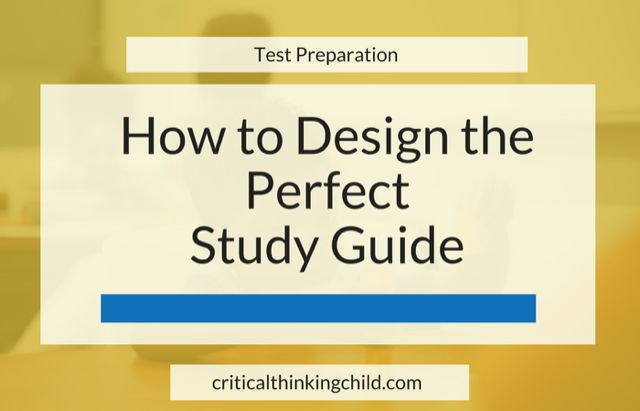Tests are stressful for students, regardless of age or grade. Even when well-known concepts are being tested, anxiety can kick in. You can ease the jitters by creating a study guide that covers what will be on the test. When you work with your child, use these guidelines to create a study guide that will be helpful and fun.
Keep it simple, visually appealing, and concise.
The last thing you want to do is overload your child with information. It’s far better to break it up into manageable chunks that are simple, concise, and structured. The human brain is designed to learn in pieces, rather than absorbing large batches of text. With this in mind, break down the content of the study guide with headers, bullet points, images, and diagrams to help your child commit concepts to memory.
Even better, consider working with your child to create a graphic organizer (also known as a foldable) that’s in line with how your child learns best. For example, a visual learner may need help understanding the concept of attributing a main idea and details to a story. You could create a graphic organizer where there is a main idea “umbrella” and detail “raindrops” to help solidify the concept that the main idea is the overarching theme and details are smaller parts that support it.
Choose the correct content.
One of the hardest parts of studying is figuring out what to study. It’s impossible to learn and remember every concept or fact that’s taught, so make sure you include the most important information in each study guide.
The first step is to ask your child if the teacher gave any notes or study guides in class that outline the concepts that will be tested. If not, use clues like the major themes of classwork and homework, and ask to review your student’s class notes to pick up on major themes in each unit. Again, work with your child to make sure you include the important content; even figuring out the most important information and writing it down in the study guide can help your child remember some concepts.
Use the skill of summarizing to go through each chapter or section with your child and ask him or her to stop and tell you the major parts. This recitation will help your child articulate important concepts and remember them on test day! Don’t forget to practice positive study habits as you go.
Make sure it’s user friendly.
It does no good if you work tirelessly to create a study guide that’s unusable. Make sure the study guide is tailored to your child’s age, developmental level, and learning style.
If your child is a visual learner, a large amount of text with graphic organizers is a great idea. If your child is an auditory learner, consider having him or her record important concepts into an audio recording so they can be played back on a phone or tablet. Have kinesthetic leaners teach the concepts to someone else like a sibling or parent.
Review good study habits with your child and make sure there is a set time and place each day to study so that reviewing the study guide becomes a routine. Never cram only the night before a test; a good rule of thumb is to begin reviewing for a major test 1-2 weeks in advance and a quiz several days to a week in advance, saving only review for the night before.
Keep these tips in mind when creating a study guide. Be sure to involve your child in the process and set both of you up for success!




These were wonderful practice quizzes and I think if I could find evwrything I needed to add to a study guide, I would definately passcwith flying colors.
I really enjoy learning, especially having been diagnosed with dyslexia, it’s been tough to compete with the managers who have been doing these programs longer than myself, but to also not have a learning disability, it must have been somewhat easier than the way I see things,
Do they have a different way to study and or learn better with this didability that you know of?
If you happen to find anything that could help me study better with this type of learning, retaining, and memorizing materials that canhelp me become the best Manager I can be, I woukd be grful
Thank you, Laura for your kind words about our practice quizzes and for sharing your story! We’re committed to supporting learners of all abilities and are actively working on developing more inclusive products.
In the meantime, our one-on-one tutors are here to support you with reading challenges. We’ll also keep in mind your request for resources on learning with dyslexia. Keep pushing forward, and we’ll do our best to support you on your learning journey!
These were wonderful practice quizzes and I think if I could find evwrything I needed to add to a study guide, I would definately passcwith flying colors.
I really enjoy learning, especially having been diagnosed with dyslexia, it’s been tough to compete with the managers who have been doing these programs longer than myself, but to also not have a learning disability, it must have been somewhat easier than the way I see things,
Do they have a different way to study and or learn better with this didability that you know of?
If you happen to find anything that could help me study better with this type of learning, retaining, and memorizing materials that canhelp me become the best Manager I can be, I woukd be grful